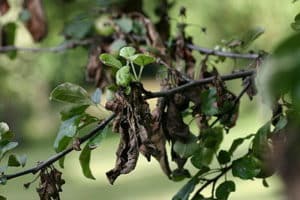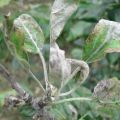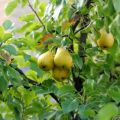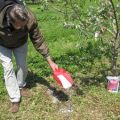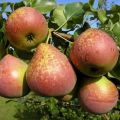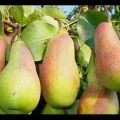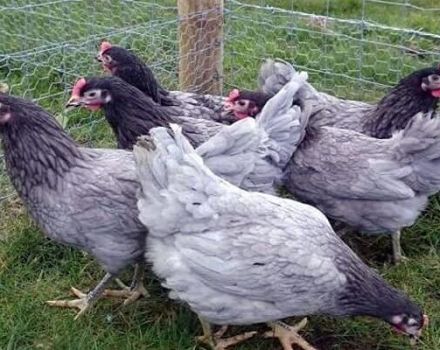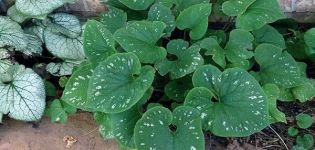Causes of scab on a pear and methods of dealing with drugs and folk remedies
Most often, a disease such as a scab can be found on a pear. This is a fungal disease that often infects fruit crops. There are many methods of fighting the fungus, including folk.
Scab provocateur
Scab occurs due to infection of the pear with a fungus. The fungus multiplies by spores that appear during flowering. Spores are carried by insects and wind from tree to tree, thereby infecting almost the entire garden.
The cause of the disease is warm, humid weather. If it is sunny outside and it does not rain for a long time, then the fungus does not multiply. But as soon as wet weather sets in, the fungus begins to multiply intensively.
Causes of occurrence:
- Damp warm weather.
- Air temperature + 20 ... + 24 degrees.
- Weakened immune system of pears.
Most often, scab spores winter in fallen leaves, and in spring, when the weather is favorable, they infect healthy trees.
Timely harvesting of leaves from the site in the fall will minimize the risk of fungus on the pear.
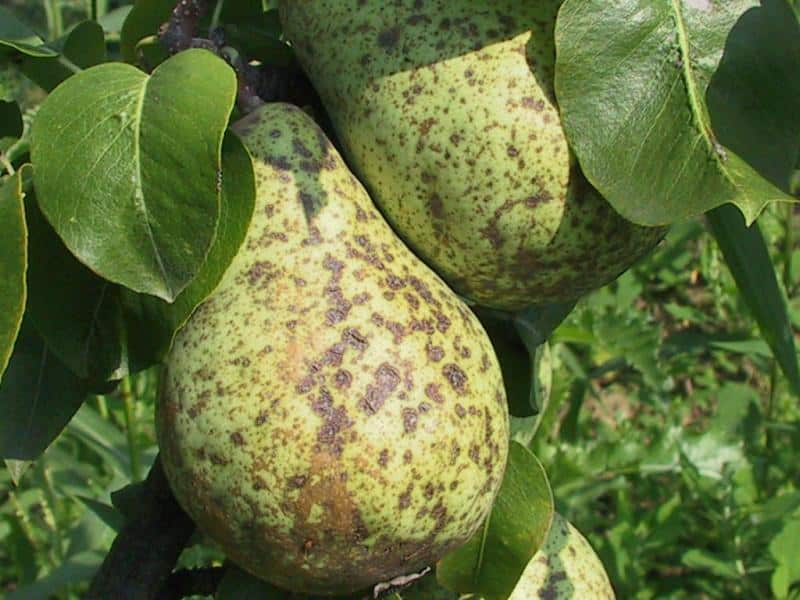
The main signs of pear infestation
To understand what kind of disease the pear will have to fight, it is necessary to study the signs of the appearance of scab. Often, some of the signs are similar to the manifestation of other diseases, so you need to pay attention to any deviations from the norm when examining the tree.
Signs of a scab on a pear:
- The first signs of fungus appear in early spring, when the plant is just beginning to grow deciduous mass.
- Small brown spots can be seen on unblown leaves.
- As the leaf grows, the spots increase in size.
- As the spots grow, they acquire an oval shape.
- Gradually, they appear on the buds, and then on the fruits.
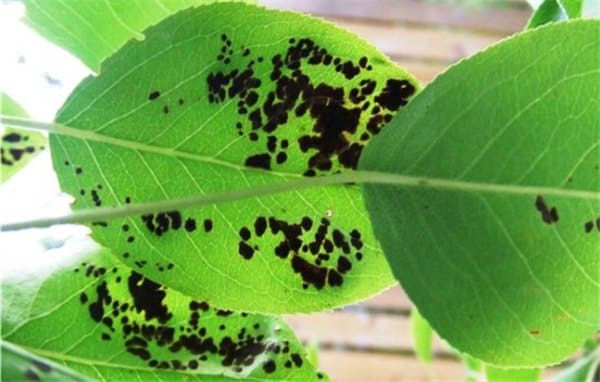
If you do not notice damage to the pear in time and do not start treatment, very soon the fungus will spread throughout the tree, and then to neighboring plants. You need to deal with scab in the initial stages in order to successfully cure the plant. It should be noted that the problem affects only the back of the sheet. In addition, the inflorescences become smaller, the fruits grow small, and the yield decreases.
Ways to deal with scab
There are many ways to combat scab, but they are conventionally divided into chemical and folk methods. Folk remedies are effective in the early stages of the disease. If the scab has managed to spread to most of the pear, then you will have to use chemical methods. It is also important to take preventive measures. It's easier to prevent fungus than to cure it.

Bordeaux liquid
Scab can be fought with Bordeaux liquid.You can buy ready-made liquid or buy Bordeaux mixture and dilute it with water. The mixture contains lime and copper sulfate. In especially advanced cases, pears are sprayed with a 3% solution of Bordeaux liquid. After flowering, the plants are treated with a 1% liquid solution. About 4 sprays with Bordeaux liquid are allowed per season.
If the agent does not have the desired effect, the number of treatments with Bordeaux liquid is increased to 7.
For the first time, the pear is sprayed with Bordeaux liquid before flowering. It is undesirable to use concentrated solutions. Faster coping with the fungus will not work, but you can burn the leaves of the tree.
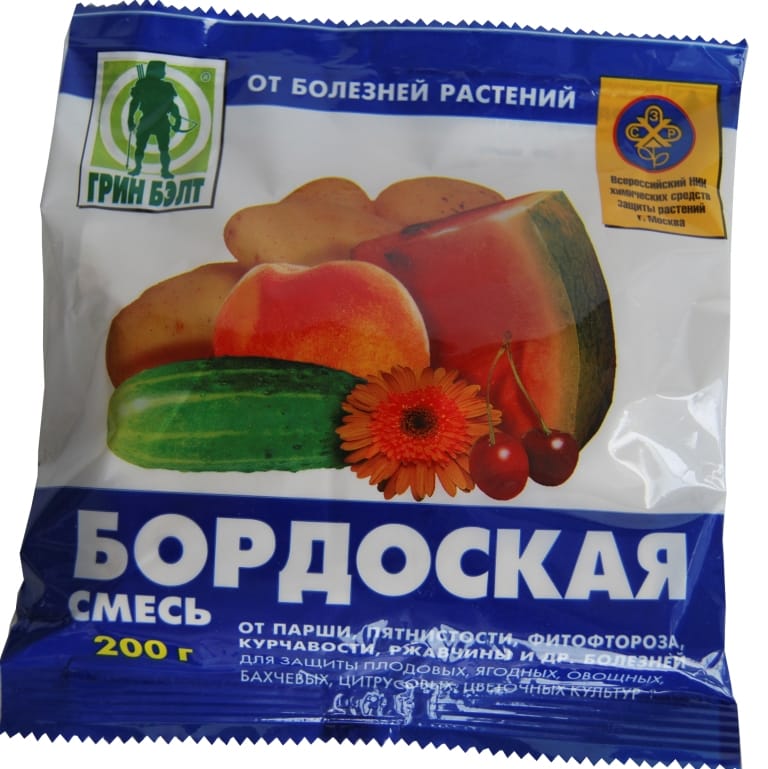
Mineral fertilizers
Mineral fertilizers are universal in that they act not only as a preventive measure against scab, but also saturate the soil with nutrients.
Of mineral fertilizers for the prevention of scab are suitable:
- You can get rid of scab with the help of ammonium nitrate. 3% top dressing is applied to the soil in early spring.
- Also in early spring, the pear is fertilized with 3% ammonium sulfate.
- In autumn, potash salt is added to the ground (20 g per 30 liters of warm water).
- In autumn, the pear is watered with nitrophoska solution.
- Plants are watered with urea in the fall (100 g per 10 liters of warm water).
- In April, calcium chloride is used (5-10%).
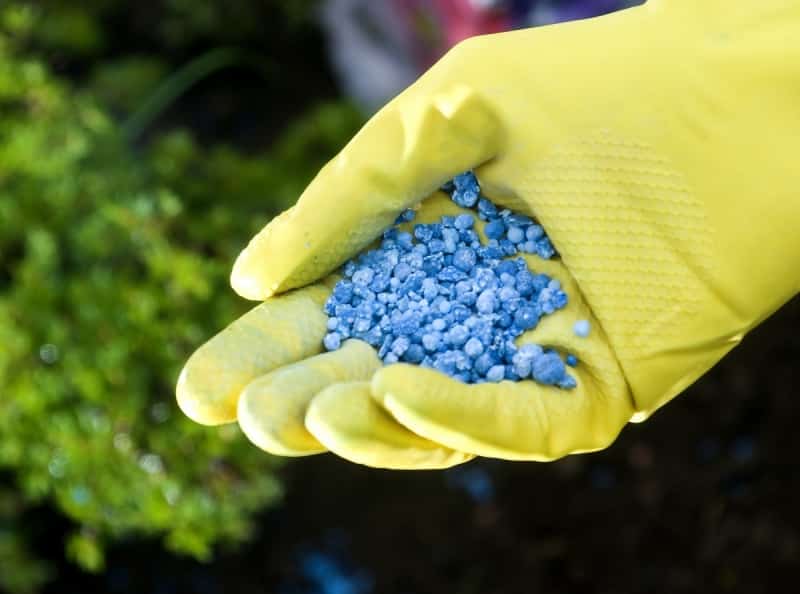
Mineral dressings are good because they can be used even during the fruiting period, because they do not belong to chemicals, which means they will not harm humans and the environment.
Chemicals
You can spray a pear from a scab with the help of copper-containing preparations. But you should be careful with them. For humans, large amounts of copper-containing products are toxic and can accumulate in the body. Many chemicals cannot be used if the pear is fruitful. The drug "Hom" has proven itself well. The chemical is produced in the form of a water-soluble powder of 20 or 40 g.
To prepare the solution, first dissolve 40 g of powder in a small amount of water, and then dilute with 10 liters. Use the chemical immediately after preparation.
"Hom" refers to systemic fungicides. It does not accumulate in plant tissues and is quickly washed off by rain. During the season, the pear is sprayed with Hom no more than 6 times. The interval between treatments is 14 days. It is not recommended to use "Hom" during the flowering period.
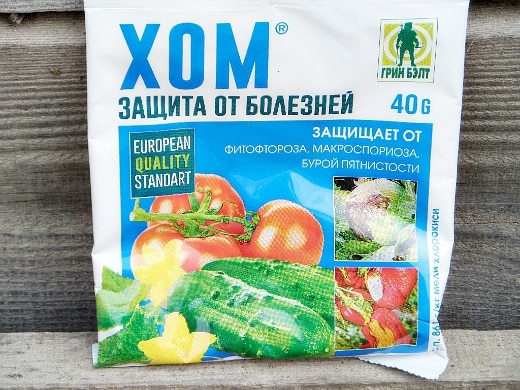
Another remedy for scab is Abiga-peak. This is an analogue of "Hom", but in the form of an aqueous suspension. The composition includes copper oxychloride.
Also, the composition includes a special substance that allows the drug to be evenly distributed over the sheet and held on its surface.
To prepare a solution, 50 ml of the product is diluted in 5 liters of water. Abiga-peak is not absorbed into plant tissue. It is recommended to use the drug only in dry weather, so that it has time to fix on the leaves and is not washed off with water. It is recommended to spray the pear no more than 4 times with Abiga-peak during the season. It is also used as a prophylactic agent due to its low toxicity.
Another remedy for scab is Oxyhom. The preparation contains copper oxide chloride and oxadixyl. Oxadixil is responsible for long-term action. The protective effect lasts for three days. Then oxadixil comes into play and destroys the infection in those areas in which the main substance did not cope. This protects the plants for up to two weeks.

The chemical is produced in the form of water-soluble granules. Oxyhom is highly toxic, so it is not recommended to use it after rain and a day before rain. "Kuprikol" is distinguished by lower consumption in comparison with similar products. It also contains copper oxychloride. The advantage is that the preparation is resistant to rain. Also, the solution can be stored for several days without precipitation.
Three treatments are enough to destroy the fungus on the pear.
Folk remedies
In the initial stages of scab, trees can be treated with folk remedies. In a state of neglect, they are unlikely to help. But at the first sign of scabs are very effective.
Folk remedies for scab:
- Dissolve mustard powder (90 g) in 1 bucket of warm water. Treat pears with mustard solution 4 times per season.
- Fill a вед bucket with horsetail. Fill in half with warm water and leave for 3 days. Spray the pear with horsetail solution after the leaves appear.
- Before the buds appear, the tree is treated with saline. 1 kg of table salt for 1 bucket of water.
- Potassium permanganate also helps fight scab. Dilute 5 g of potassium permanganate in 10 liters of water. In early spring, the trunk circle is treated with potassium permanganate. Then the tree is processed during leafing, during flowering and during the period of fruit filling.
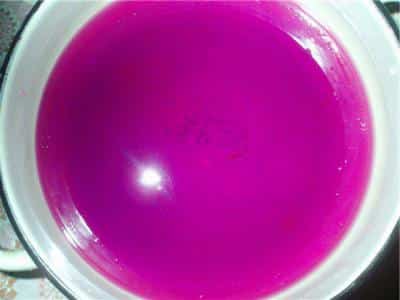
Folk remedies are not as aggressive as chemicals and do not accumulate in fruits. Before fighting with chemicals, you can try to cure scab with these recipes.
Disease prevention
Kuproxat is another effective fungicide in the fight against scab on fruit trees. The composition includes copper acetate and ammonia solution. Also acts as a nitrogenous mineral supplement for plants. To destroy the fungus, "Kuproksat" is used in the spring before bud break. In autumn, it acts as a prophylactic agent against fungi. A solution of "Kuproksat" is poured over the soil, which contributes to the destruction of fungi that are in the ground.
Also, to combat scab, use "Tsikhom", preparations based on sulfur and systemic fungicides. It is important to carry out preventive treatments in the fall, so that in the spring you do not have to fight the epidemic of the fungus.

Scab-resistant pear varieties
Currently, breeders have bred a large number of varieties of pearsthat are resistant to scab.
Fungus resistant varieties:
- Commemorative;
- In memory of Parshin;
- January;
- Central Russian;
- The conference.
No one can give a 100% guarantee that these varieties will never get sick with scab. But, unlike other varieties, these hybrids get scab much less often. You can improve the immunity of any variety with the help of regular feeding and anti-aging pruning.
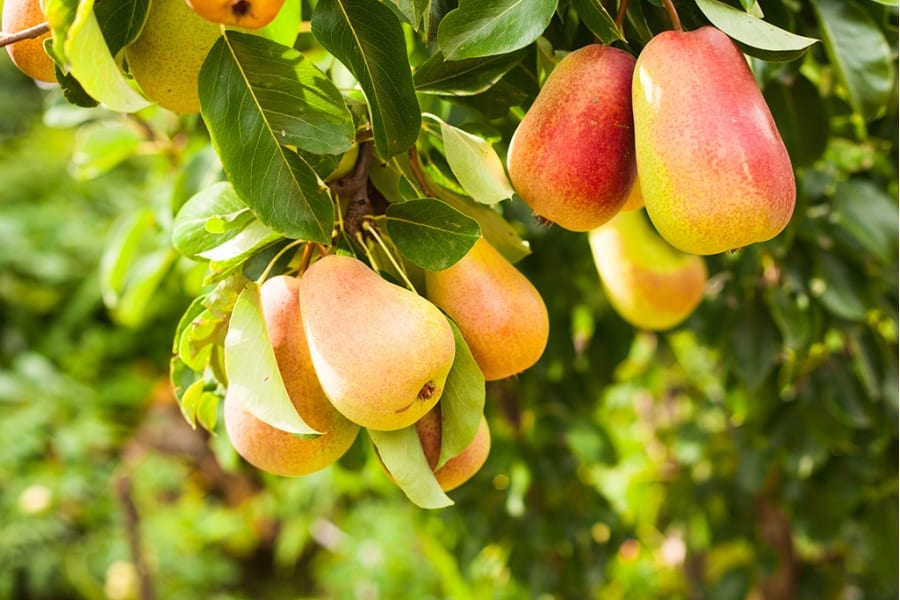
Processing schedule
Pear processing will vary depending on the season. The calendar for processing pears from scab includes several stages. In the spring, the pear is processed at least 4 times. The first treatment is carried out before the swelling of the kidneys. The second time is at the beginning of bud break. The third treatment is carried out before flowering. And the last one - after flowering.
The purpose of spring processing is:
- Prevention of fungi.
- Destruction of pre-existing disputes.
- Improving the immunity of the tree
In the summer, the goal of treatment is to destroy pests and combat existing diseases. Spray the pear as needed. In autumn, the pear is sprayed until the leaves fall off. Autumn spraying is a preventive measure. With timely processing, the pear will not be afraid of any disease.

